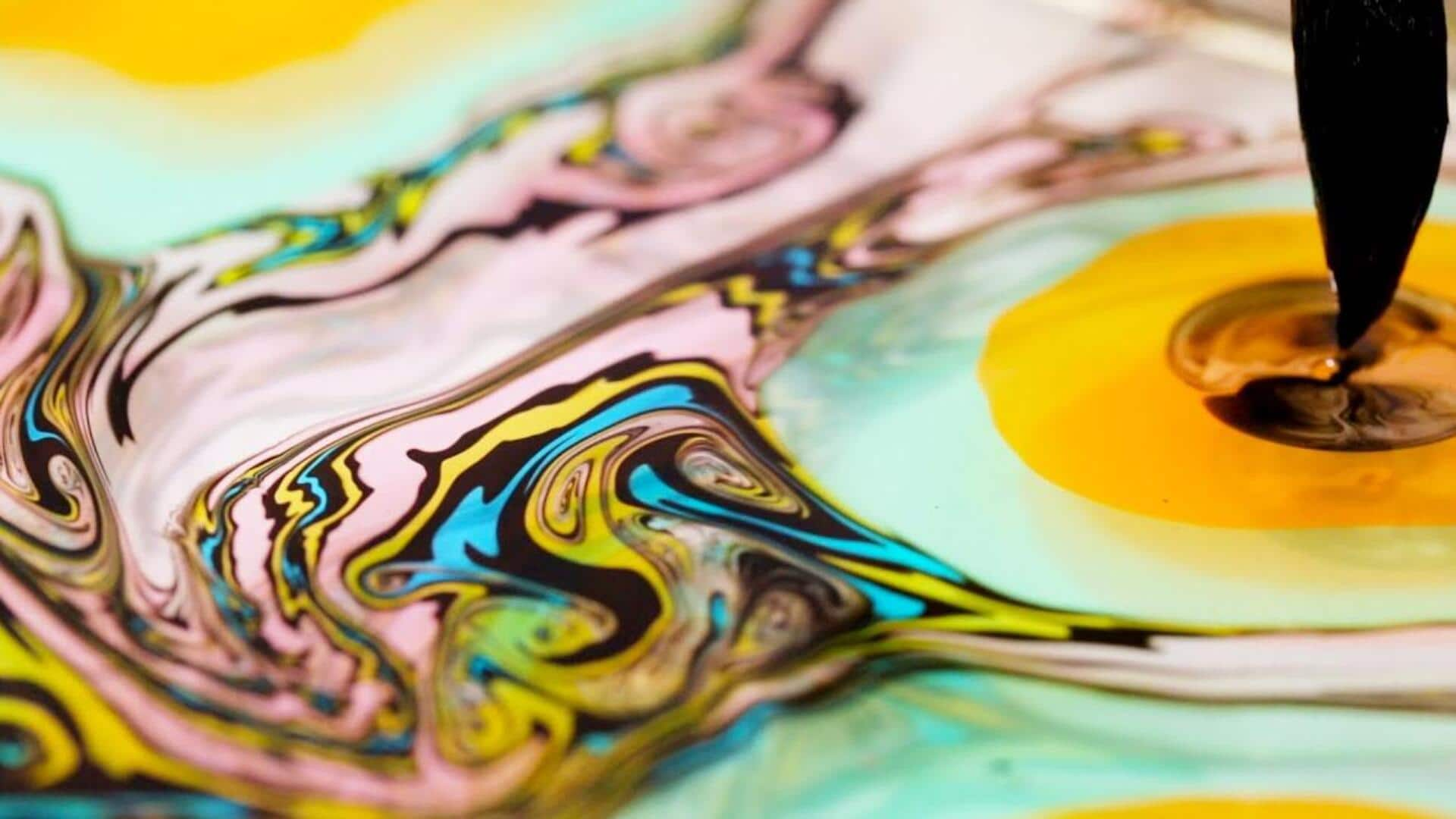
Introduction to suminagashi: Ancient marbling art in Japan
What's the story
Suminagashi, or "floating ink," is an ancient Japanese art form that creates intricate marbled paper patterns. Dating back more than a thousand years for calligraphy and poetry decoration, this technique involves the use of floating ink on water, transferring unique designs onto paper. It's appreciated for its simplicity and minimal tool requirement, yet it results in complex designs.
Origins
Historical background of suminagashi
Originated in Japan in the Heian period, some 12 centuries ago, this art was mostly practiced by the aristocrats for personal stationery and official documents. The art form spread via cultural exchanges with China and Korea, influencing other marbling techniques across the globe. Despite its age, is still widely practiced because of its meditative process and beautiful results.
Essential tools
Tools required for suminagashi
The basic tools required for suminagashi are a shallow tray of water, sumi ink (or any water-based ink), brushes/ droppers to apply the ink, and an absorbent paper such as rice paper or washi. Some artists even use surfactants such as dish soap to control the ink's movement on water. These simple materials make it beginner-friendly but also allow experienced artists to try complex designs.
Pattern creation
Techniques used in creating patterns
To create patterns in suminagashi, one lightly touches the surface of the water with a brush dipped in ink. Artists create concentric circles by alternating between different colors or shades of ink. By gently blowing on the surface or directing a fan at it, they manipulate these circles into different shapes and forms before transferring them onto paper.
Contemporary uses
Modern applications of suminagashi
Today, suminagashi is not only confined to its traditional usage but has also been incorporated into modern art forms including bookbinding, textile design, and digital media projects. Artists play around with different inks and papers to create varying effects, all the while keeping the spirit of this ancient technique alive. Its versatility makes sure it inspires creativity across various artistic fields even today.